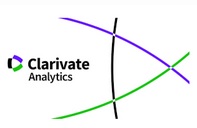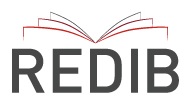Effects of assisted training with neurofeedback on EEG measures, executive function and mood in a sample from normal population
Abstract
Training in neurofeedback (NF) is to teach individuals to modify, adjust and enhance their brain activity pattern. The aim of our research was to evaluate the effect of training on cognitive processes, specifically executive function, and affect in a non-clinical sample. A sample of 30 female college students were assigned to three groups: HD: right hemisphere (n = 10), HI: left hemisphere (n = 10) and control (n = 10). The dominance pattern of beta and the inhibition of the theta pattern were trained in a single session. Measures of executive function (Iowa Gambling Test) and questionnaires of mood (PANAS and POMS) were taken pre and post training. We found that NF training produced significant positive changes in executive performance in the HD group. In the EEG a tendency to improve the beta wave after the training emerged too. Additionally, significant correlations were found between executive performance and negative affect relative to theta frequency band. We conclude that the protocol seems effective to enhance some aspects of executive function as well as to decrease the theta waves favors the reduction of negative affect.Downloads
References
Angelakis, E., Stathopoulou, S., Frymiare, J., Green, D., Lubar, J. y Kounios, J. (2007). EEG neurofeedback: a brief overview and an example of peak alpha frequency training for cognitive enhancement in the elderly. The Clinical Neuropsychologist, 21, 110–129.
Balaguer, I.; Fuentes, I.; Meliá, J. L., Garcia-Mérita, M. L.; y Pérez-Recio, G. (1993). El Perfil de los estados de ánimo (POMS): baremo para estudiantes valencianos y su aplicación en el contexto deportivo. Revista de Psicología del Deporte, 4, 39-52.
Becerra, J., Fernández, T., Roca-Stappung, M., Díaz-Comas, L., Galán, L., Bosch, J., Espino, M., Moreno, A. J., y Harmony T. J. (2012). Neurofeedback in healthy elderly human subjects with electroencephalographic risk for cognitive disorder. Alzheimer Disease, 28 (2), 357-67.
Bechara, A., Damasio, H., y Damasio, A. (2000). Emotion, Decision Making and Orbitofrontal Cortex. Cerebral Cortex, 10 (3), 295-307.
Bocková, M., Chládek, J., Jurák, P., Halámek, J., y Rektor, I. (2007). Executive functions processed in the frontal and lateral temporal cortices: Intracerebral study. Clinical Neurophysiology, 118 (12), 2625-2636.
Bush, G., Luu, P., y Posner, M. I. (2000). Cognitive and emotional influences in anterior cingulate cortex. Trends in Cognitive Science, 4 (6), 215-222.
Damasio, A. R. (1996). The somatic marker hypothesis and the possible functions of the prefrontal cortex. Philosophical Transactions of the Royal Society B: Biological Sciences, 351, 1413–1420.
Davidson, R. J. (1998). Anterior electrophysiological asymmetries, emotion, and depression: Conceptual and methodological conundrums. Psychophysiology, 35, 607–614
Doppelmayr, M., Klimesch,W., Stadler,W., Polhuber, D., y Heine, C. (2002). EEG alpha power and intelligence. Intelligence, 30, 289–302.
Duffy, F. H., Iyer, V. G., y Surwillo, W. W. (1989). Clinical electroencephalography and topographic brain mapping: Technology and practice. New York: Springer-Verlag.
Egner, T. y Gruzelier, J. (2004). EEG Biofeedback of low beta band components: Frequency-specific effects on variables of attention and event-related brain potentials. Clinical Neurophysiology, 115, 131–139.
Fuchs, T., Birbaumer, N., Lutzenberger, W., Gruzelier, J. H. y Kaiser, J. (2003). Neurofeedback treatment for attention-deficit/hyperactivity disorder in children: a comparison with methylphenidate. Applied Psychophysiology and Biofeedback, 28, 1–12.
Hammond, D. (2005). Neurofeedback Treatment of Depression and Anxiety. Journal of Adult Development, 12, 131-137.
Hanslmayer, S., Sauseng, P., Doppelmayr, M., Schabus, M. y Klimesch, W. (2005). Increasing individual upper alpha power by neurofeedback improves cognitive performance. Applied Psychophysiology and Biofeedback, 30, 1–10.
Heilman, K. M., Bowers, D., Valenstein, E. y Watson, R.T. (1986). The right hemi-sphere: Neuropsychological functions. Journal of Neurosurgery, 64, 693-704.
Henriques, J. B. y Davidson, R. J. (1991). Left frontal hypoactivation in depression. Journal of Abnormal Psychology, 100, 534–545.
Holtmann, M., Steiner, S., Hohmann, S., Poustka, L. y Banaschewski, T. (2011). Neurofeedback in autism spectrum disorders. Developmental Medicine & Child Neurology, 53, 986–993
Johnston , S. J., Boehm , S.G., Healy, D., Goebel, R. y Linden, D. (2010). Neurofeedback: A promising tool for the self-regulation of emotion networks. NeuroImage, 49, 1066–1072
Klimesch, W. (1999). EEG alpha and theta oscillations reflect cognitive and memory performance: A review and analysis. Brain Research Reviews, 29, 169–195.
Klimesch, W., Doppelmayr, M., Russegger, H., Pachinger, T., y Schwaiger, J. (1998). Induced alpha band power changes in the human EEG and attention. Neuroscience Letters, 244 (2), 73–76.
Kouijzer, M E., de Moor, J. M., Gerrits, B. J., Congedo, M. y van Schie, H.T. (2009). Neurofeedback improves executive functioning in children with autism spectrum disorders. Research in Autism Spectrum Disorders, 3, 145–62.
Landers, D. M., Petruzzello, S. J., Salazar, W., Crews, D. J., Kubitz, K. A., y Gannon, T. L. (1991). The influence of electrocortical biofeedback on performance in pre-elite archers. Medicine and Science in Sports and Exercise, 23(1), 123–129.
Lubar, J. F. (1991). Discourse on the development of EEG diagnostics and biofeedback for attention-deficit/hyperactivity disorders. Biofeedback Self Regulation,16,201–25.
Mann, J., Lubar, A., Zimmerman, C., Miller, C. A., y Muenchen, R. (1992). Quantitative analysis of EEG in boys with attention deficit hyperactivity disorder: controlled study with clinical implications. Pediatric Neurology, 8, 30–36.
Monastra, V. J., Lubar, J. F., y Linden, M. (2001). The development of a quantitative electroencephalographic scanning process for attention deficit-hyperactivity disorder: Reliability and validity studies. Neuropsychology, 15, 136–144.
Monastra, V. J., Monastra, D. M., y George, S. (2002). The effects of stimulant therapy, EEG biofeedback, and parenting style on the primary symptoms of attention-deficit/hyperactivity disorder. Applied Psychophysiology and Biofeedback, 27, 231 –49.
Oldfield, R.C. (1971). The assessment of handedness: The Edinburgh Inventory. Neuropsychologia, 9, 97 – 113.
Pavlenko, V., Chernyi, S., y Goubkina, D. (2009). EEG Correlates of Anxiety and Emotional Stability in Adult Healthy Subjects. Neurophysiology, 41, 400-408.
Posner, M. I., y Driver, J. (1992). The neurobiology of selective attention. Current Opinion in Neurobiology, 2, 165-169.
Rasey, H. W., Lubar, J. E., McIntyre, A., Zoffuto, A. C., y Abbott, P. L. (1996). EEG biofeedback for the enhancement of attentional processing in normal college students. Journal of Neurotherapy, 1, 15–21.
Rossiter, T. R., y LaVaque, T. J. (1995). A comparison of EEG biofeedback and psychostimulants in treating attention deficit hyperactivity disorders. Journal of Neurotherapy, 1, 48–59.
Sterman, M. B. (2000). Basic concepts and clinical findings in the treatment of seizure disorders with EEG operant conditioning. Clinical Electroencephalography, 31, 45–55.
Vernon, D. (2005). Can neurofeedback training enhance performance? An evaluation of the evidence with implications for future research. Applied Psychophysiology and Biofeedback, 30 (4), 347-364
Vernon, D., Egner, T., Cooper, N., Compton, T., Neilands, C., Sheri, A., y Gruzelier, J. (2004). The effect of distinct neurofeedback training protocols on working memory, mental rotation and attention performance. Journal of Neurotherapy, 8 (1), 100–101.
Vernon, D., Egner, T., Cooper, N., Compton, T., Neilends, C., Sheri, A. y Gruzelier, J. (2003). The effect of training distinct neurofeedback protocols on aspects of cognitive performance. International Journal of Psychophysiology, 47, 75–85.
Watson D., Clark L. A. y Tellegen A. (1988). Development and Validation of Brief Measures of Positive and Negative Affect: The PANAS Scales. Journal of Personality and Social Psychology, 54 (6), 1063-1070.
Wu, H., Ding, Y., Zhou, J., y Yang, H. (2004). A comparative study of brain wave in depression, schizophrenia and neurosis. Chinese Journal of Behavioral Medical Science, 13 (5), 522-523.
The works published in this journal are subject to the following terms:
1. The Publications Service of the University of Murcia (the publisher) retains the property rights (copyright) of published works, and encourages and enables the reuse of the same under the license specified in paragraph 2.
© Servicio de Publicaciones, Universidad de Murcia, 2022
2. The works are published in the online edition of the journal under a Creative Commons Reconocimiento-CompartirIgual 4.0 (legal text). You can copy, use, distribute, transmit and publicly display, provided that: i) you cite the author and the original source of publication (journal, editorial and URL of the work), ii) are not used for commercial purposes, iii ) mentions the existence and specifications of this license.
This work is licensed under a Creative Commons Attribution-ShareAlike 4.0 International License.
3. Conditions of self-archiving. Is allowed and encouraged the authors to disseminate electronically pre-print versions (version before being evaluated and sent to the journal) and / or post-print (version reviewed and accepted for publication) of their works before publication, as it encourages its earliest circulation and diffusion and thus a possible increase in its citation and scope between the academic community. RoMEO Color: Green.















